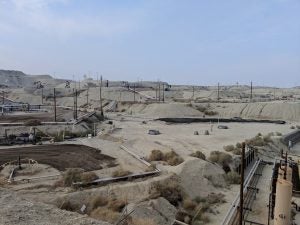California fixes a major problem with oilfield wastewater injection
 A new rule goes into effect today that will help protect California’s groundwater.
A new rule goes into effect today that will help protect California’s groundwater.
The rule applies to injection wells – the underground facilities that enable enhanced oil recovery and the long-term disposal of the oil industry’s wastewater. California has around 55,000 oilfield injection wells, nearly one-third of the nation’s total, and the state’s oil industry injects over 100 billion gallons of water a year into them. The Division of Oil, Gas and Geothermal Resources (DOGGR) came under scrutiny in recent years when the U.S. Environmental Protection Agency (EPA) discovered state regulators accidentally allowed thousands of wells to pump oilfield wastewater directly into drinking water aquifers, along with other program deficiencies.
The water injected underground through these wells varies tremendously in quality, but can be extremely salty and may contain radioactive, carcinogenic and otherwise harmful chemicals. The extent to which the state’s errors contaminated groundwater is not fully known, but the new rule should help prevent any future contamination.
From back of the pack, to taking the lead
The new standards for oilfield injection are some of the strongest in the nation. They require stricter permitting standards, regular mechanical integrity testing and routine pressure monitoring – all necessary ingredients for safeguarding groundwater. (Read the full rule here)
California fixes a major problem with oilfield wastewater injection Share on XThe permitting process, for example, is one of the most important protections we have against potential contamination from oil and gas operations. Permits dictate where wells can be located and how they will function. It’s essentially an agreement between the state and oil and gas companies on the best ways to do business (i.e., with minimal risk to health/safety). The new standards strengthen the criteria required to get a permit and will help the state and companies prevent and/or mitigate contamination.
Mechanical integrity testing is another crucial tool to ensure a well is functioning properly. Requiring operators to routinely test their systems to make sure they aren’t leaking can help prevent equipment failures that may result in water pollution.
Enhanced pressure monitoring will also lead to better outcomes. If a well’s pressure rises or falls unexpectedly, it may be a sign that some aspect of the system has been breached – perhaps a hole in the well, or fluids moving where they’re not supposed to. Monitoring well pressure allows operators and the state to know immediately if there is a problem, enabling rapid response to reduce the extent of a potential pollution (or safety) event.
It’s great to see that DOGGR is taking the environmental risks of oil and gas development seriously. These rule improvements are a promising demonstration of DOGGR’s commitment to protective oversight of oil operations in California. Now that the rule making process is done, the hard but important job of implementing these new protections (along with innovating around aquifer exemptions, surface water management, inspections, data management, coordination with other agencies, community outreach and enforcement) can begin.










